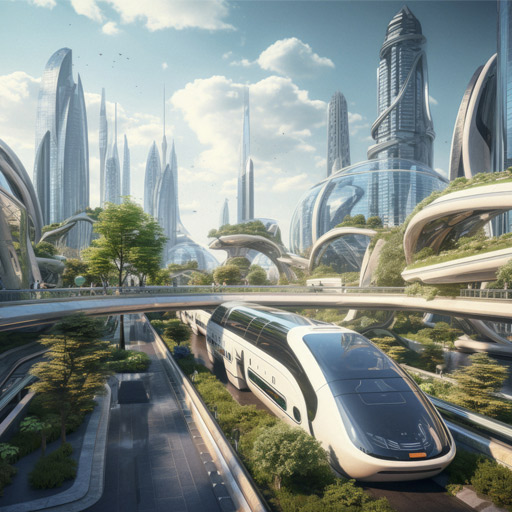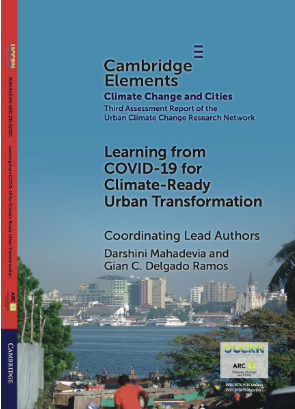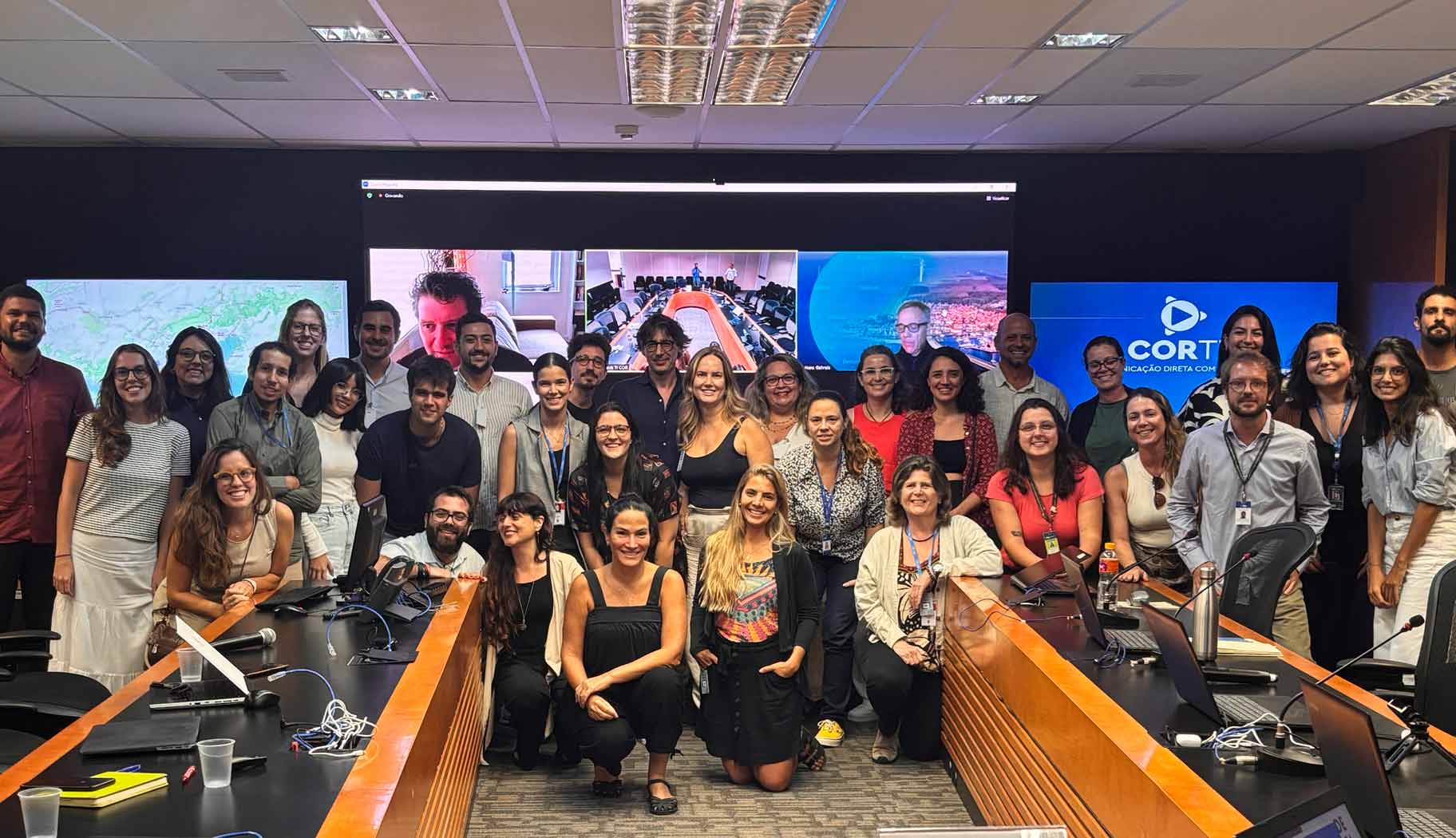As urbanization accelerates worldwide, cities face mounting challenges that threaten their sustainability and resilience. From climate change and resource depletion to socioeconomic disparities and public health crises, urban areas must navigate complex issues while ensuring a high quality of life for their inhabitants. The COVID-19 pandemic underscored the fragility of urban systems, but it also provided valuable insights into the potential for rapid adaptation and innovation in city planning. This article explores the essential components of sustainable urban development, highlighting best practices from leading cities and the role of governance, technology, and community engagement in shaping resilient and inclusive urban environments. Through a combination of nature-based solutions, climate-conscious design, and forward-thinking policies, the sustainable cities of the future can transform challenges into opportunities, paving the way for a more equitable and ecologically responsible urban future.
List of Contents
The Urgency of Sustainable Urban Development
A sustainable city meets the needs of its current residents without compromising those of future generations. It integrates economic, environmental, and social sustainability to ensure a high quality of life while minimizing ecological impact. The cities of the future must be designed with adaptability in mind, ensuring they are inclusive and environmentally responsible. Key areas of focus include:
- Reducing carbon emissions by transitioning to renewable energy and implementing energy-efficient building designs.
- Improving public transportation through investments in electric and autonomous vehicles, expanding public transit networks, and prioritizing walkability.
- Implementing smart technologies to enhance urban management, optimize resource use, and improve citizen engagement.
- Fostering community engagement by encouraging participatory governance and ensuring equitable access to urban services.

Sustainable Urban Infrastructure and Green Development
The COVID-19 pandemic demonstrated how cities can rapidly adapt their structures and behaviors, offering valuable lessons on addressing health and climate crises. Some cities, such as Copenhagen, Singapore, and Curitiba, have already set strong examples by prioritizing renewable energy, sustainable mobility, green infrastructure, and resilient urban planning. Copenhagen, for instance, has developed advanced stormwater management systems that not only mitigate the effects of heavy rainfall but also enhance urban biodiversity and create recreational spaces for residents.
Five key features define a sustainable city:
- Reliance on renewable energy sources – Solar, wind, and hydroelectric power should replace fossil fuels to reduce carbon footprints.
- Well-developed public transit networks – Efficient, accessible, and affordable transportation can decrease car dependency and urban congestion.
- Integration of green spaces and biodiversity – Parks, rooftop gardens, and urban forests improve air quality and provide social and recreational benefits.
- Efficient waste management and recycling systems – Circular economy principles can reduce waste and promote the reuse of materials.
- Climate-resilient infrastructure – Buildings and public spaces should be designed to withstand extreme weather conditions and natural disasters.
Moving forward, cities must adopt comprehensive mitigation and adaptation strategies, invest in green infrastructure, ensure equitable access to resources, and leverage technological innovations to create more efficient and sustainable urban environments. The time to act is now—building the sustainable cities of the future is not just an option but a necessity.

Discover Third Assessment Report on Climate Change and Cities (ARC3.3)
Cities and the urbanization process itself are at a crossroads. While the world’s urban population continues to grow, cities are increasingly pressed by chronic and acute stresses like increasing inequity, polluted air and waters, limited governance and financial capacities, along with entrenched spasmodic crime and conflict – and the COVID-19 pandemic. Climate change has now exacerbated these problems and in many cases created new ones, at a time when cities are asked to be the bulwark of the climate solution space.
Planning Sustainable Cities: Lessons from the COVID-19 Pandemic
The COVID-19 pandemic highlighted the fragility of urban systems but also revealed opportunities for transformation. It forced cities worldwide to rethink urban planning, particularly in terms of public space usage, transportation, and social infrastructure. The drastic reduction in human activity led to improved air quality and lower carbon emissions, demonstrating that behavioral changes can significantly impact urban sustainability.
Addressing Urban Inequalities and Energy Poverty
Research from Boza-Kiss et al. (2021) highlights how the pandemic exacerbated existing inequalities in cities. Lockdowns amplified urban energy poverty, disproportionately affecting lower-income groups living in poorly insulated homes. Increased energy use for heating and electricity raised costs, burdening vulnerable households. The crisis underscored the need for energy-efficient building renovations and social support mechanisms to ensure equitable access to energy.
The Role of Urban Governance in Pandemic Resilience
Findings from Chu et al. (2021) emphasize that urban governance capacity, rather than city size, plays a crucial role in pandemic resilience. Their study of 276 Chinese cities found that well-governed cities had higher recovery rates and better pandemic control outcomes. Cities with robust governance structures benefited from better resource allocation, crisis management, and emergency response coordination. Investments in smart city technologies also enhanced cities’ ability to monitor and manage crises effectively.

Urban governance strategies that integrate long-term planning, early warning systems, and coordinated action across multiple sectors can significantly enhance a city’s ability to respond to crises. Chu et al. (2021) further highlight that cities with advanced smart city infrastructures were able to leverage digital tools, artificial intelligence, and big data analytics to improve health monitoring and optimize resource distribution during the pandemic.
The Digital Divide and Urban Inclusion
The pandemic also exposed significant digital divides within urban areas. Many lower-income communities struggled with access to digital services, impacting remote work, education, and essential services. According to Boza-Kiss et al. (2021), improved digital infrastructure and inclusive policies can help bridge these gaps, ensuring that all citizens benefit from smart city technologies and online resources. Cities must prioritize investments in digital literacy programs and affordable broadband access to ensure equitable participation in the digital economy.
Slum Vulnerabilities and Informal Settlements
Slums and informal settlements were hit particularly hard by the pandemic, with overcrowding and inadequate access to sanitation making social distancing nearly impossible. The pandemic reinforced the urgency of slum upgrading programs that provide secure housing, reliable infrastructure and access to essential services. Cities must adopt community-driven planning approaches to enhance resilience and equity in these vulnerable areas.

Future Directions for Sustainable Urban Development
To create sustainable cities of the future, urban planners must integrate multiple strategies, including:
- Developing resilient supply chains to ensure access to essential goods and services during crises.
- Encouraging local economic development by supporting small businesses and community-based initiatives.
- Enhancing emergency preparedness through investments in healthcare infrastructure and disaster response systems.
- Promoting inclusive urban policies that ensure equitable access to housing, transportation, and digital services.
Building sustainable cities of the future is a pressing priority. By embracing innovative urban planning, integrating nature-based solutions, strengthening urban governance, addressing energy and digital disparities, and fostering social equity, cities can become more resilient, livable, and environmentally responsible in the face of ongoing global challenges.
References
Coordinating Lead Authors
- Darshini Mahadevia, Ahmedabad University, Ahmedabad
- Gian C. Delgado Ramos, National Autonomous University of Mexico, Mexico City
Lead Authors
- Janice Barnes, Climate Adaptation Partners and the University of Pennsylvania, New York/Philadelphia
- Joan Fitzgerald, Northeastern University, Boston
- Miho Kamei, Institute for Global Environmental Strategies, Hayama
- Kevin Lanza, University of Texas Health Science Center at Houston (UTHealth), Austin
Contributing/Case Study Authors
- Zaheer Allam, University of Paris, Paris
- Amita Bhide, Tata Institute of Social Sciences, Mumbai
- Yakubu Bununu, Ahmadu Bello University, Zaria
- Didier Chabaud, University of Paris, Paris
- Amitkumar Dubey, Ahmedabad University, Ahmedabad
- Yann Francoise, Climate and Ecological Transition Directorate at Paris City, Paris
- Saumya Lathia, Ahmedabad University, Ahmedebad
- María Fernanda Mac Gregor-Gaona, National Autonomous University of Mexico, Mexico City
- Carlos Moreno, Paris 1 Sorbonne University, Tunja/Paris
- Marie-Christine Therrien, Ecole Nationale d’Administration Publique – Cité-ID LivingLab Urban Resilience Governance, Montreal
- Nada Toueir, Lincoln University, Montreal
- Nelzair Vianna, Oswaldo Cruz Foundation, Salvador
Element Scientist
- Melissa López Portillo-Purata, National Autonomous University of Mexico, Mexico City
The Urgency of Sustainable Urban Development
- Mahadevia D, Delgado-Ramos GC, Barnes J, et al. Learning from COVID-19 for Climate-Ready Urban Transformation. Cambridge University Press; 2025.
- Basu, R., & Ferreira, J. (2021). Sustainable mobility in auto-dominated Metro Boston: Challenges and opportunities post-COVID-19. Transport Policy, 103, 197–210. https://doi.org/10.1016/j.tranpol.2021.01.006.
- Bhuiyan, M. A., An, J., Mikhaylov, A., Moiseev, N., & Danish, M. S. S. (2021). Renewable energy deployment and COVID-19 measures for sustainable development. Sustainability, 13(8), Article 8. https://doi.org/10.3390/su13084418.
Sustainable Urban Infrastructure and Green Development
- Chu, Z., Cheng, M., & Song, M. (2021). What determines urban resilience against COVID-19: City size or governance capacity? Sustainable Cities and Society, 75, 103304. https://doi.org/10.1016/j.scs.2021.103304
- IEA. (2020). Sustainable Recovery: World Energy Outlook Special Report. International Energy Agency.
- IPCC. (2018). Global Warming of 1.5°C: An IPCC Special Report on the Impacts of Global Warming of 1.5°C above Pre-Industrial Levels and Related Global Greenhouse Gas Emission Pathways, in the Context of Strengthening the Global Response to the Threat of Climate Change, Sustainable Development and Efforts to Eradicate Poverty.
Planning Sustainable Cities: Lessons from the COVID-19 Pandemic
- Boza-Kiss, B., Pachauri, S., & Zimm, C. (2021). Deprivations and inequities in cities viewed through a pandemic lens. Frontiers in Sustainable Cities, 3.
- Buehler, R., & Pucher, J. (2022). Cycling through the COVID-19 pandemic to a more sustainable transport future: Evidence from case studies of 14 large bicycle-friendly cities in Europe and North America. Sustainability, 14(12), https://doi.org/10.3390/su14127293.
- ECLAC. (2022). How to Finance Sustainable Development: Recovery from the Effects of COVID-19 in Latin America and the Caribbean. Economic Commission for Latin America and the Caribbean. https://bit.ly/3YjuIZC.
- Mouratidis, K. (2022). COVID-19 and the compact city: Implications for well-being and sustainable urban planning. Science of the Total Environment, 811, 152332. https://doi.org/10.1016/j.scitotenv.2021.152332.





